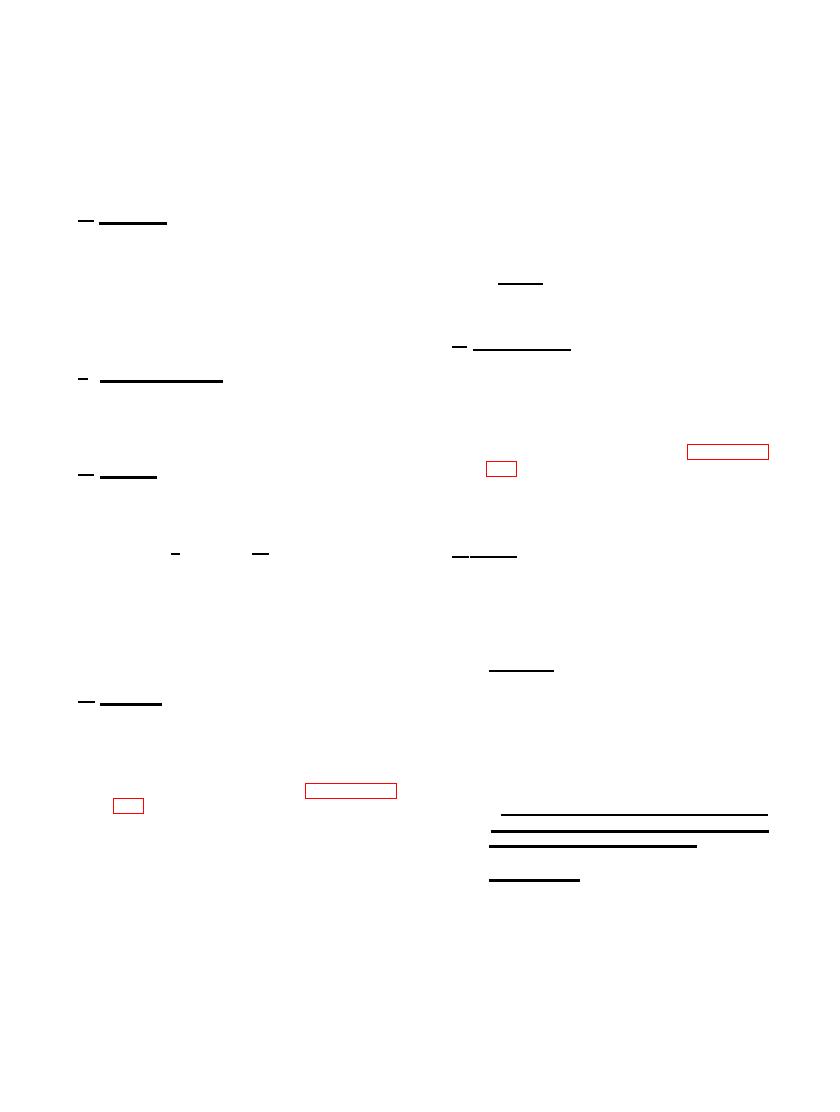 |
|||
|
|
|||
|
|
|||
| ||||||||||
|
|
 square. This provides a locking effect
(4) Repair minor warpage of mounting
flanges and gasket surfaces by working
upon the stud or bolt when it is threaded
surface across a sheet of crocus cloth
into the insert.
h e l d tightly on a surface plate or
similar flat surface. Replace castings
(2) Inspection. Inspect all helical coil in-
having flanges which are warped to the
serts for secure fit in the casting and
point of impairing assembly or oper-
for galled or stripped threads.
ation.
h . Oil Seals. Metal encased oil seals should
(5) Repair damaged pipe or cap screw
not be replaced unless inspection indicates dam-
threads in tapped holes with a used tap.
age.
N o t e . Pipe plug threads in castings
(1) Inspect feather edge of oil seal for dam-
must be in good condition to prevent
age.
oil or water leakage.
(2) Check seal for loss of pliability and re-
siliency.
c. Ball Bearings.
(1) Replace all galled, pitted, or damaged
i. Core Hole Plugs. Inspect core hole plugs
for evidence of leakage. Replace seals if leaking
ball bearings.
or damaged.
(2) Replace all ball bearings which do not
conform to tolerances specified in re-
154. REPAIR
pair and rebuild standards in paragraphs
a . General. The procedures for repair will
be the same for a great percentage of the parts
(3) Refer to TM 9-214 for maintenance of
and components which comprise the engine sub-
ball bearings.
assemblies. To avoid repetition of instructions,
the general procedures for repair are detailed
in paragraphs b through g . Any repair pro-
d . Studs. Replace all bent or loose studs or
cedures which are peculiar to a specific part or
studs showing evidence of stretching. Repair
component are covered in the section or para-
minor thread damage with a thread chaser.
graph relating to that item. After repair, clean
Replace all studs having stripped or damaged
all parts thoroughly to prevent metal chips from
threads. Remove and replace studs as outlined
repair operations, or abrasives used in repair
in (1) and (2) below.
operations, from entering working parts of the
engine.
(1) Removal. Using stud extractor, back
studs out slowly to avoid heating and
possible seizure. When studs are broken
b . Castings.
off too short to use stud extractor, drill
stud and extract with a suitable remover.
(1) Replace all cracked castings.
Short studs may also be removed by
welding a piece of bar stock or a nut
(2) Replace all castings which do not con-
to stud and removing with a wrench.
form to tolerances specified in repair
and rebuild standards in paragraphs
Caution: Avoid damage to casting while
using welding equipment. Refer to TM 9-
(3) Repair minor damage to machined sur-
8252 for welding instructions.
faces with a fine mill file or crocus
cloth dipped in dry-cleaning solvent or
(2) Replacement. Only standard studs are
mineral spirits paint thinner. Replace
supplied for replacement in steel or
all castings on which machined surfaces
iron castings. Unless threads in cast-
are burred or nicked to the point of
ings are damaged beyond repair, use
impairing subsequent assembly or oper-
standard studs. If threaded openings
ation.
are damaged and retapping will not
|
|
Privacy Statement - Press Release - Copyright Information. - Contact Us |